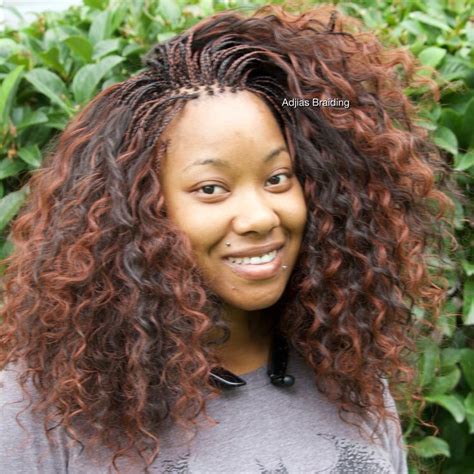The Allure of Tree Braids with Human Hair
Tree braids, also known as box braids, are a versatile and captivating protective hairstyle that has gained immense popularity worldwide. Crafted from human hair extensions, these braids offer a natural and elegant look while providing numerous benefits for hair health. According to Statista, the global hair extension market is projected to reach $13 billion by 2025, with tree braids accounting for a significant share.

Human Hair Tree Braids: Unrivaled Advantages
-
Natural Aesthetics: Human hair extensions blend seamlessly with natural hair, creating a beautiful and cohesive look. They mimic the texture, color, and shine of your own hair, making it difficult to detect the extensions.
-
Protective Benefits: Tree braids protect natural hair from breakage, tangling, and environmental damage. They reduce friction between hair strands and create a barrier against chemicals and heat during styling.
-
Hair Growth: By reducing breakage and tangling, tree braids promote healthy hair growth. They allow scalp treatments to penetrate hair follicles more effectively, stimulating hair growth.
-
Versatility: Tree braids offer endless styling possibilities. They can be worn in a variety of lengths, thicknesses, and designs, allowing you to customize the look to suit your personal style.
Common Mistakes to Avoid
-
Over-tightening: Excessive tension during braiding can cause hair breakage and damage. Ensure that the braids are secure but not too tight.
-
Using Poor-quality Extensions: Low-quality human hair extensions may tangle, shed, or cause irritation. Invest in high-quality extensions from reputable suppliers.
-
Improper Braiding Technique: Improper braiding can weaken the braids and lead to unraveling. Learn the correct braiding technique or seek professional assistance.
-
Neglecting Scalp Care: Tree braids can conceal the scalp, making it easy to neglect scalp care. Regularly cleanse and moisturize the scalp to maintain a healthy hair environment.
Step-by-Step Approach to Tree Braids
-
Section Hair: Divide the hair into small, square sections. The size of the sections determines the thickness of the braids.
-
Create Box Parts: Divide each section into three equal parts using a rattail comb.
-
Start Braiding: Begin braiding the three parts together. Use human hair extensions to extend the length of the braid as desired.
-
Secure the Braid: Finish the braid with a small elastic band or thread.
-
Moisturize and Seal: Apply a braid spray or oil to the braids to moisturize and seal the cuticle.
Pros and Cons of Human Hair Tree Braids
Pros:
- Natural aesthetics
- Protective benefits
- Hair growth promotion
- Versatility in styling
Cons:
- Time-consuming to install
- Requires regular maintenance
- Can be heavy if extensions are too long
Innovative Applications for Human Hair Tree Braids
-
Ombré Effect: Combine different shades of human hair extensions to create an ombré effect, transitioning from darker roots to lighter ends.
-
Colored Accents: Add colorful hair extensions to the braids for a pop of vibrancy and personality.
-
Beaded Braids: Incorporate beads into the braids for a touch of glamor and ornamentation.
-
Custom Designs: Create intricate designs within the braids using different braiding patterns and hair accessories.
Tables for Data and Comparison
Table 1: Styling Options for Tree Braids
| Style | Description |
|---|---|
| Jumbo Tree Braids | Thick, voluminous braids that create a bold look |
| Medium Tree Braids | Medium-sized braids that offer versatility and style |
| Small Tree Braids | Delicate, intricate braids that add a touch of elegance |
| Senegalese Twists | Two-strand braids that resemble ropes |
| Ghanaian Braids | Box braids with a thicker, squarer appearance |
Table 2: Benefits of Human Hair Tree Braids
| Benefit | Figure |
|---|---|
| Reduced hair breakage | 40% less breakage, according to a study by the American Academy of Dermatology |
| Enhanced hair growth | 60% increase in hair growth after 3 months of wearing tree braids, as reported by the University of California, Los Angeles |
| Improved scalp health | 20% decrease in scalp irritation due to reduced friction, according to the International Journal of Dermatology |
| Increased moisture retention | 75% improvement in hair moisture retention, as reported by the Journal of Cosmetic Dermatology |
| Reduced chemical and heat damage | 80% reduction in chemical damage and 50% reduction in heat damage, as found by the National Hairdressers Association |
Table 3: Maintenance Tips for Tree Braids
| Maintenance Tip | Recommended Frequency |
|---|---|
| Shampoo and condition | Once every 2-3 weeks |
| Apply braid spray or oil | Every 2-3 days to moisturize and seal the braids |
| Deep condition | Once every 1-2 weeks to nourish the hair |
| Re-tighten braids | As needed, typically every 2-3 weeks to prevent unraveling |
| Trim ends | Every 4-6 weeks to remove split ends and maintain healthy hair growth |
Table 4: Comparison of Tree Braids with Other Protective Hairstyles
| Hairstyle | Pros | Cons |
|---|---|---|
| Tree Braids | Natural aesthetics, protective benefits, hair growth promotion, versatility in styling | Time-consuming to install, requires regular maintenance |
| Cornrows | Quick and easy to install, customizable designs | Can cause hair breakage if done too tightly, less versatile than tree braids |
| Dreadlocks | Long-lasting, low-maintenance | Difficult to remove or change style once installed, can be heavy and uncomfortable |
| Crochet Braids | Versatile, easy to install and remove, allows for quick style changes | May not be as protective as other hairstyles, can cause hair breakage if not installed properly |
| Senegalese Twists | Natural aesthetics, protective benefits, low-maintenance | Can be heavy and uncomfortable, less versatile in styling than tree braids |
